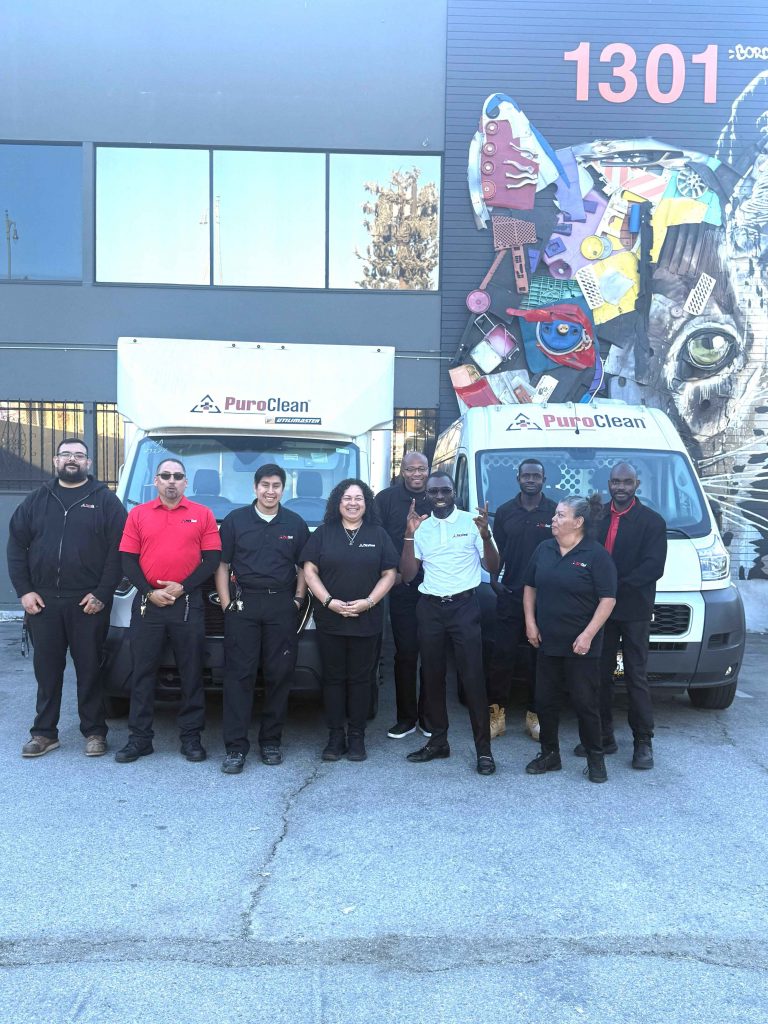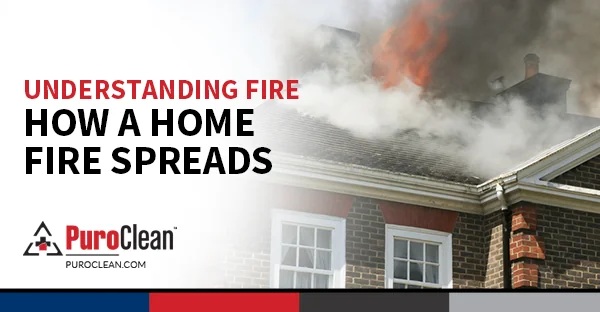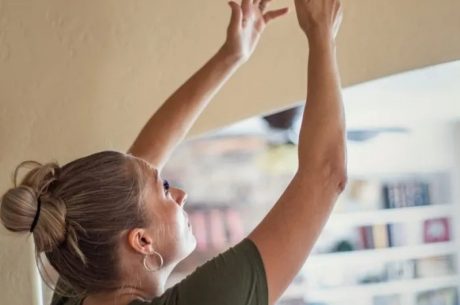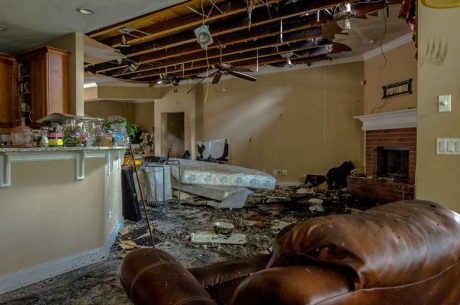At PuroClean of Victor Heights, we’ve seen firsthand the aftermath of house fires. We understand the physical damage, the emotional toll, and the urgent need for professional restoration. But more importantly, we believe in proactive prevention and preparation. The sobering truth is that when a fire ignites in your home, you have mere minutes – not hours – to escape. This isn’t an exaggeration; it’s a stark reality dictated by the physics of fire and the modern materials found in our homes.
In this comprehensive guide, we’ll delve into the alarming speed at which fires spread, the hidden dangers of smoke and heat, and the crucial steps you can take to protect your loved ones and your Victor Heights property.

The Alarming Speed of Fire: A Time-Sensitive Emergency
Imagine this: a small spark, perhaps from an overloaded outlet, a forgotten pan on the stove, or a dropped cigarette. In your mind, you might picture a slow burn, giving you plenty of time to react. The reality is far more terrifying.
Fact 1: Fires can get out of control very quickly – usually in less than 30 seconds from the event that caused them.
This is a critical piece of information that often surprises people. A small, seemingly insignificant ignition can escalate into a room-engulfing inferno in less time than it takes to brew a cup of coffee. The reason? Modern homes are often filled with synthetic materials in furniture, carpets, and decor. These materials, while convenient and affordable, are often petroleum-based and highly flammable. They act as fuel, accelerating the fire’s growth at an exponential rate.
Think about your sofa, your curtains, the synthetic fibers in your carpet. When ignited, these materials don’t just burn; they melt and release volatile gases that contribute to the rapid spread of flames. The innocent-looking armchair can become a roaring furnace in seconds, sending flames leaping to nearby objects. This initial rapid growth means that the window of opportunity for safely extinguishing the fire yourself is virtually nonexistent once it gains even a slight foothold. Your immediate focus must shift to escape.
The Insidious Danger of Smoke: The Invisible Killer
While flames are the most visually dramatic aspect of a fire, the greatest threat to human life often comes from something far less visible: smoke.
Fact 2: After about a minute, smoke begins to fill the room. At first, it rises to the ceiling, then it descends, until the room is entirely filled with smoke. Fire produces black smoke that makes it very difficult to see anything, not to mention that it contains toxic chemicals that cause drowsiness and asphyxiation.
This is where the term “smoke inhalation” becomes critically important. It’s not the burns that claim the most lives in house fires; it’s the toxic cocktail of gases and particulates within the smoke.
- Visibility Zero: The thick, black smoke produced by burning synthetic materials is incredibly dense. Imagine trying to navigate your own home, a place you know intimately, in pitch blackness, with a heavy, suffocating blanket of smoke obscuring everything. This loss of visibility is disorienting and can lead to panic, making escape routes difficult or impossible to find.
- Toxic Brew: Modern materials, when burned, release a horrifying array of toxic chemicals, including carbon monoxide, hydrogen cyanide, and phosgene. These gases attack your respiratory system and nervous system.
- Carbon Monoxide (CO): Often called the “silent killer,” CO is odorless, colorless, and tasteless. It rapidly replaces oxygen in your bloodstream, leading to dizziness, confusion, nausea, and ultimately, unconsciousness and death. Even a small amount of CO can impair your judgment, making escape more challenging.
- Hydrogen Cyanide: This gas interferes with the body’s ability to use oxygen at a cellular level.
- Phosgene: This chemical can cause severe lung damage, leading to pulmonary edema (fluid in the lungs).
- Asphyxiation: Beyond the chemical toxins, the sheer lack of oxygen in a smoke-filled room is a deadly threat. As fire consumes oxygen, the air becomes unbreathable, leading to suffocation.
The smoke doesn’t just stay in one place; it spreads rapidly throughout your home through vents, open doorways, and even small cracks. The initial upward movement is quickly followed by a descent, meaning that within minutes, the entire room, from floor to ceiling, can be filled with noxious fumes, leaving no breathable air. This underscores the urgency of getting low and crawling under the smoke, where the air is often cleaner and cooler.
The Invisible Inferno: The Danger of Heat
While flames are visually striking, the heat generated by a fire is arguably a more immediate and pervasive killer.
Fact 3: The temperature in the room increases steadily. In fact, heat and smoke cause more deaths than the actual flames. After about 3 minutes, the temperature can reach 600 degrees at eye level, and breathing this hot air will severely burn your lungs. This is also the point where fire spreads to other rooms.
This fact cannot be overstated: the extreme temperatures in a burning room are lethal.
- Lethal Temperatures: Imagine a desert day in Victor Heights where the temperature hits 100 degrees Fahrenheit. Now multiply that by six. At 600 degrees, the air itself is a weapon. Inhaling air at these temperatures will cause severe burns to your lungs and respiratory tract, leading to swelling and fluid accumulation that makes breathing impossible. Even a few breaths of such hot air can be fatal.
- Flash Burns: Beyond lung damage, exposed skin can suffer severe, life-threatening burns from the radiant heat alone, even without direct contact with flames.
- Structural Compromise: Intense heat also weakens the structure of your home, causing materials to warp, crack, and potentially collapse. Floors can give way, walls can buckle, and ceilings can fall.
- Rapid Spread: At this three-minute mark, the fire is no longer confined to its point of origin. The intense heat, combined with the presence of flammable gases released from burning materials, allows the fire to “roll” across ceilings and spread rapidly into adjacent rooms and hallways, turning your entire home into a deathtrap.
Flashover: The Point of No Return
There’s a critical phenomenon in fire progression that signifies the ultimate point of no return for human life within a burning structure: flashover.
Fact 4: After about 4 to 5 minutes, the heat in the room of origin increases so much that it causes everything to ignite. This is called a flashover. Flames and smoke can be visible from the outside, through windows or other openings. Rescuing victims may not be possible at this point.
Flashover is not a slow burn; it’s an explosive ignition of all combustible materials in a room. Think of it like a toaster. As the temperature rises, eventually, all the bread in the toaster ignites simultaneously. In a room fire, as the heat builds, combustible gases are released from furniture, curtains, and even wall coverings. When these gases reach their ignition temperature, the entire room erupts into flames almost simultaneously.
- Total Involvement: Every surface, every item in the room, is now fully engulfed in flames. The room becomes a solid mass of fire.
- No Survivability: At this stage, the temperatures are impossibly high, and the air is completely unbreathable. There is absolutely no chance of survival for anyone trapped inside the room of origin or even adjacent rooms where flashover may soon occur.
- Visible from Outside: By this point, the fire is likely roaring, and flames and dense black smoke will be visible from the exterior of the property through windows or other openings. This is the moment when firefighters arrive to find a fully developed fire.
- Rescue Impossible: Firefighters are highly trained and brave, but even they cannot enter a structure during or immediately after a flashover without extreme risk and specialized equipment, and even then, rescue efforts focus on areas not yet consumed by the flashover. For victims within the flashed-over area, it’s tragically too late.
The Fully Developed Stage: A Property Devastated
The fire’s progression doesn’t stop at flashover.
Fact 5: Fire reaches its fully developed stage when it has spread over all available fuel (furniture, walls, etc.) and the temperature has reached its peak.
Once flashover occurs, the fire has consumed the room of origin and is actively spreading, fueled by everything combustible in its path.
- Maximum Intensity: This is the point of maximum heat release and fire intensity. The entire structure is threatened, and the fire will continue to burn until it runs out of fuel, oxygen, or is extinguished by firefighters.
- Catastrophic Damage: At this stage, the damage to the property is catastrophic. Structural integrity is severely compromised, and possessions are reduced to ash. Even if the fire is extinguished, the property will require extensive restoration, often down to the studs.
These facts paint a grim picture, but they serve a crucial purpose: to emphasize the importance of proactive fire safety measures and rapid response. When a fire starts, your only priority is getting out.
Being Prepared: Your Lifeline in Victor Heights
Given the terrifying speed and destructive power of a home fire, preparedness is not a luxury; it’s an absolute necessity for every household in Victor Heights, CA. Here are the cornerstone elements of fire safety that can mean the difference between life and death:
1. Install and Maintain Smoke Alarms
This is arguably the single most important step you can take. Smoke alarms are your first line of defense, providing those precious few seconds you need to escape.
- Location, Location, Location: Install smoke alarms on every level of your home, including the basement. Place them inside every sleeping area and in the hallway outside of each separate sleeping area.
- Type Matters: Consider interconnected smoke alarms. When one sounds, they all sound, giving you and your family more time to react, especially if a fire starts in a remote part of the house. Opt for both ionization and photoelectric smoke alarms, or dual-sensor alarms, as they detect different types of fires more effectively.
- Test Regularly: Test your smoke alarms monthly by pressing the test button. Replace batteries at least once a year (a good reminder is when you change your clocks for daylight saving time). Replace the entire smoke alarm unit every 10 years, as their sensors degrade over time.
- Don’t Disable: Never disable a smoke alarm, even if it’s chirping or goes off occasionally while cooking. That chirp means it needs a new battery. Clean around the alarm to prevent dust buildup which can cause false alarms.
2. Don’t Forget Carbon Monoxide Detectors
While not directly related to fire ignition, carbon monoxide (CO) is a deadly byproduct of incomplete combustion, which can occur from faulty furnaces, water heaters, gas stoves, or even fireplaces. Since CO is odorless, colorless, and tasteless, it’s impossible to detect without a specialized alarm.
- Install Alongside Smoke Alarms: Just like smoke alarms, CO detectors should be installed on every level of your home and near sleeping areas.
- Regular Testing: Test CO detectors monthly and replace them according to the manufacturer’s instructions, typically every 5-7 years.
3. Consider a Fire Sprinkler System
While not as common in existing homes, fire sprinkler systems are highly effective at controlling and even extinguishing fires in their early stages.
- Rapid Response: Sprinklers react quickly to heat, activating only in the area where the fire is detected. This limits fire growth and reduces overall damage.
- Proven Life Savers: Homes with fire sprinklers have a significantly lower rate of fire deaths and injuries. They can contain a fire to the room of origin, or even extinguish it, long before the fire department arrives.
- Water Damage is Minimal Compared to Fire: While sprinklers do cause water damage, it’s typically far less severe and extensive than the damage caused by a fully developed fire and the vast amounts of water firefighters use to extinguish it.
4. Develop and Practice a Fire Escape Plan
Even with alarms and sprinklers, you need a clear, practiced plan for getting everyone out safely.
- Two Ways Out: For every room, identify at least two ways out (e.g., a door and a window). Ensure windows open easily and aren’t blocked. If rooms are on upper floors, consider fire escape ladders for windows.
- Designated Meeting Place: Choose a safe, easily identifiable meeting place outside your home, a safe distance away. This could be a neighbor’s mailbox, a specific tree, or the end of your driveway. This ensures everyone is accounted for.
- Practice, Practice, Practice: Conduct fire drills at least twice a year, both during the day and at night. Practice getting low and crawling under smoke. Practice opening windows and using escape routes. Emphasize that once out, you stay out – never go back inside for anything.
- Know Your Emergency Number: Teach everyone, especially children, to call 911 (or your local emergency number) once they are safely outside.
- Special Needs: If you have family members with mobility issues, hearing impairments, or other special needs, incorporate their specific requirements into your plan. Assign responsibilities for assisting them.
What to Do When a Fire Occurs: Your Action Plan
When the smoke alarm blares, every second counts. Here’s a brief action plan:
- GET OUT IMMEDIATELY: Do not hesitate. Do not stop to collect valuables. Do not call 911 from inside the house. Your life is the most valuable thing.
- STAY LOW AND CRAWL: If there’s smoke, get on your hands and knees and crawl to the nearest exit. The air will be cleaner and cooler closer to the floor.
- FEEL DOORS FOR HEAT: Before opening any closed door, feel it with the back of your hand. If it’s hot, don’t open it. Use your second escape route. If it’s cool, open it slowly, bracing yourself in case heat or smoke pushes against it.
- GO TO YOUR MEETING PLACE: Once outside, proceed directly to your pre-determined meeting spot.
- CALL 911: From a neighbor’s house or a cell phone, call emergency services. Provide your address and describe the situation calmly.
- STAY OUTSIDE: Never re-enter a burning building for any reason. Firefighters are trained professionals; let them handle it. Inform them if anyone is still inside.
The Aftermath: When PuroClean of Victor Heights Steps In
Despite the best precautions, fires can still occur. When they do, the damage extends far beyond the flames. Smoke permeates every surface, leaving behind corrosive soot and a pervasive odor. Water used by firefighters can cause significant secondary damage, leading to mold growth if not addressed promptly.
This is where PuroClean of Victor Heights becomes your trusted partner. We are the “Paramedics of Property Damage®.” Our certified and highly trained technicians specialize in:
- Fire Damage Restoration: This isn’t just about cleaning up ash. It involves specialized techniques to remove soot, smoke odor, and neutralize corrosive byproducts that can continue to damage your property long after the flames are extinguished.
- Smoke Odor Removal: Smoke particles are microscopic and penetrate porous materials. We use advanced equipment, including ozone generators and thermal foggers, to eliminate stubborn smoke odors from your home’s structure and contents.
- Content Cleaning and Restoration: Many of your cherished possessions can be salvaged. We meticulously clean, deodorize, and restore salvageable items, reducing your losses and helping you retain precious memories.
- Water Damage Restoration: Firefighting efforts often leave behind significant water damage. Our team is equipped to extract water, dry affected areas, and prevent secondary issues like mold growth.
- Mold Remediation: If water damage has led to mold, we provide comprehensive mold remediation services to safely and effectively remove contaminants and restore healthy indoor air quality.

At PuroClean of Victor Heights, we understand the emotional distress that accompanies fire damage. We work quickly, efficiently, and with compassion to mitigate further damage, restore your property, and help you get back to normal as quickly as possible. We communicate every step of the process, ensuring you’re informed and comfortable.




 PuroClean of Victor Heights
PuroClean of Victor Heights